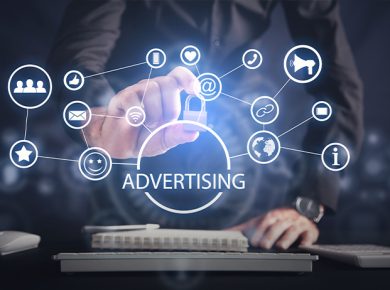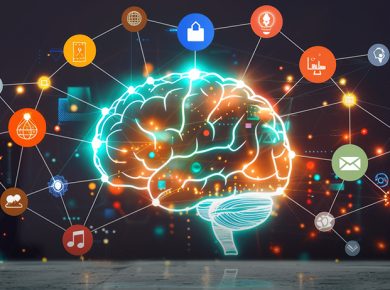Table of Contents
- What Is Haptic Marketing?
- Objective of the Article
- How Haptic Marketing Works
- Real-Life Examples of Haptic Marketing in Action
- Advantages of Haptic Marketing
- Disadvantages of Haptic Marketing
- Statistical Insights into Haptic Technology
- Projections: Haptic Marketing in the Future
- How Brands Can Benefit from Haptic Marketing
- The Touch of Tomorrow
What Is Haptic Marketing?
Haptic marketing leverages the sense of touch to create immersive, memorable brand experiences. The term “haptic” relates to the tactile feedback humans experience through physical interaction. In a world where digital and virtual interactions dominate, haptic technology bridges the gap between virtual experiences and tangible sensations, creating a multi-sensory marketing strategy that resonates on a deeper emotional level.
This approach isn’t just theoretical—haptic feedback is already transforming industries like gaming, healthcare, and retail. From vibrating gaming controllers to touch-enabled virtual shopping experiences, brands are exploring innovative ways to engage customers through tactile interactions.
Objective of the Article
- Explain what haptic marketing is and its connection to brand experiences.
- Showcase real-life examples of companies using haptic technology in marketing.
- Analyze the advantages, disadvantages, and future potential of haptic strategies.
How Haptic Marketing Works
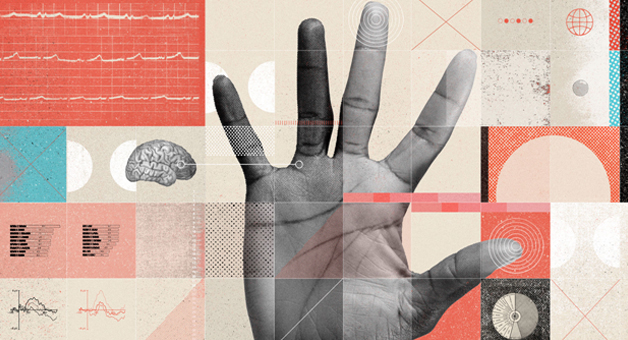
Haptic marketing creates physical feedback in digital or real-world interactions, allowing customers to “feel” a brand’s message. Using tools like vibration, pressure, and motion, marketers aim to evoke emotions and strengthen brand recall.
For instance:
- A virtual try-on tool for clothing can simulate the texture of fabric.
- Smartphone apps use vibrations to mimic the feeling of a handshake or product interaction.
Real-Life Examples of Haptic Marketing in Action
1. Lexus: Sensory Driving Experience
Lexus incorporated haptic feedback into its advertising by creating a touch-enabled magazine ad. Readers could feel a car’s vibrations as if driving it, offering a tactile taste of the luxury driving experience.
2. Lush Cosmetics: Haptic App Feedback
The Lush app uses haptic feedback to replicate the sensation of pressing physical buttons, enhancing user engagement and mimicking the texture of their organic products.
3. Disney: Immersive Theme Park Attractions
Disney parks employ haptic technology in rides and attractions, such as 4D movie experiences where guests can “feel” wind, water splashes, or vibrations, aligning sensory stimulation with the story.
Advantages of Haptic Marketing
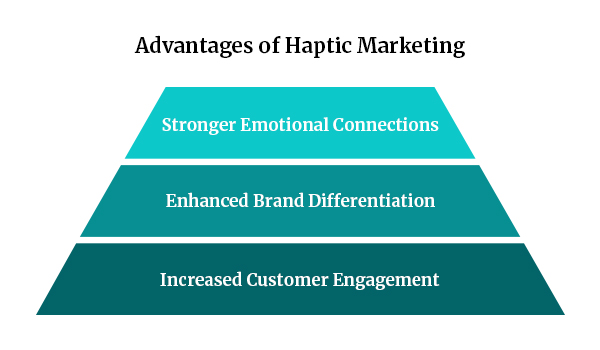
1. Stronger Emotional Connections
- Physical sensations evoke emotional responses, increasing brand loyalty.
- Haptic feedback improves message retention; studies show users remember
- 20% more information when touch is involved (Journal of Marketing Research, 2023).
2. Enhanced Brand Differentiation
- Innovative haptic experiences set brands apart in competitive markets.
3. Increased Customer Engagement
- Physical interaction extends dwell time and boosts the likelihood of purchase.
Disadvantages of Haptic Marketing
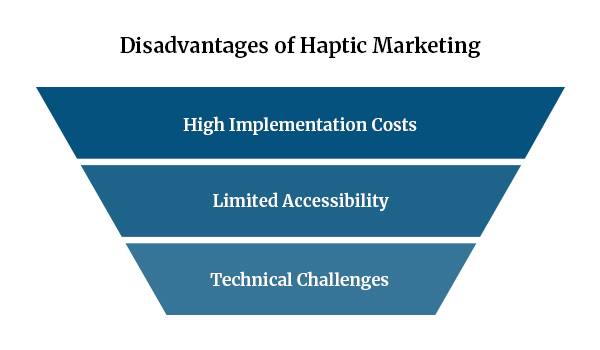
1. High Implementation Costs
- Advanced haptic technology, such as tactile screens and feedback devices, can be expensive.
2. Limited Accessibility
- Not all customers have access to devices capable of haptic feedback, reducing reach.
3. Technical Challenges
- Designing seamless haptic experiences requires specialized skills, potentially delaying execution.
Statistical Insights into Haptic Technology
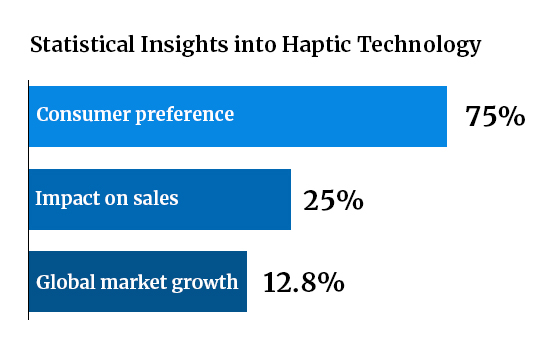
- Global market growth: The haptic technology market is expected to reach $19 billion by 2030, growing at a CAGR of 12.8% (Grand View Research, 2024).
- Impact on sales: Products featuring haptic feedback see a 25% increase in purchase intent compared to non-haptic alternatives (Harvard Business Review, 2023).
- Consumer preference: 75% of consumers say they are more likely to buy a product after experiencing tactile interactions (Deloitte, 2023).
Projections: Haptic Marketing in the Future

1. Integration with Virtual Reality (VR) and Augmented Reality (AR)
Haptic gloves, vests, and suits will bring touch to immersive virtual environments, allowing customers to “feel” products they see online.
2. Expansion in E-Commerce
Online stores may adopt touch-enabled shopping tools to simulate product textures, bridging the sensory gap between online and physical retail.
3. Growth in Healthcare and Education
Haptic learning tools could teach users about products through tactile exploration, especially in healthcare, where simulations mimic real-world procedures.
How Brands Can Benefit from Haptic Marketing
1. Boosting Engagement
Haptic marketing enhances storytelling, providing customers with an experience rather than just information.
2. Strengthening Brand Loyalty
Brands that connect on a sensory level create lasting impressions, building emotional connections that translate to loyalty.
3. Standing Out in Competitive Markets
Early adopters of haptic technology gain a first-mover advantage, positioning themselves as innovators.
The Touch of Tomorrow
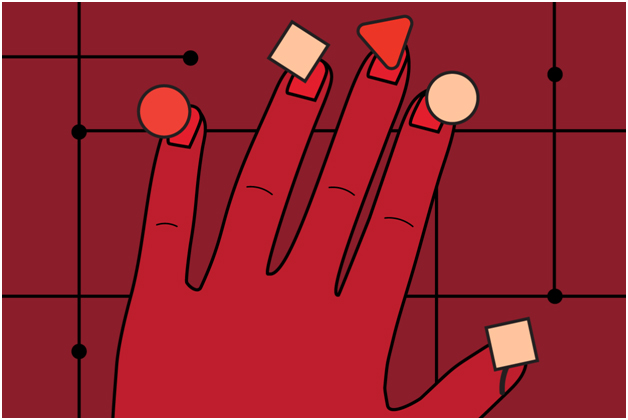
As technology evolves, haptic marketing represents a unique opportunity to redefine customer experiences. By integrating touch into brand interactions, companies can create deeply memorable, multi-sensory campaigns that foster engagement and drive loyalty.
While the initial investment may be steep, the returns in customer retention and differentiation are invaluable.
For brands looking to stand out in 2025 and beyond, haptic marketing offers a promising frontier—one that transforms static messaging into dynamic, interactive storytelling. In a world increasingly dominated by digital experiences, touch may just be the missing link between brands and their customers.


